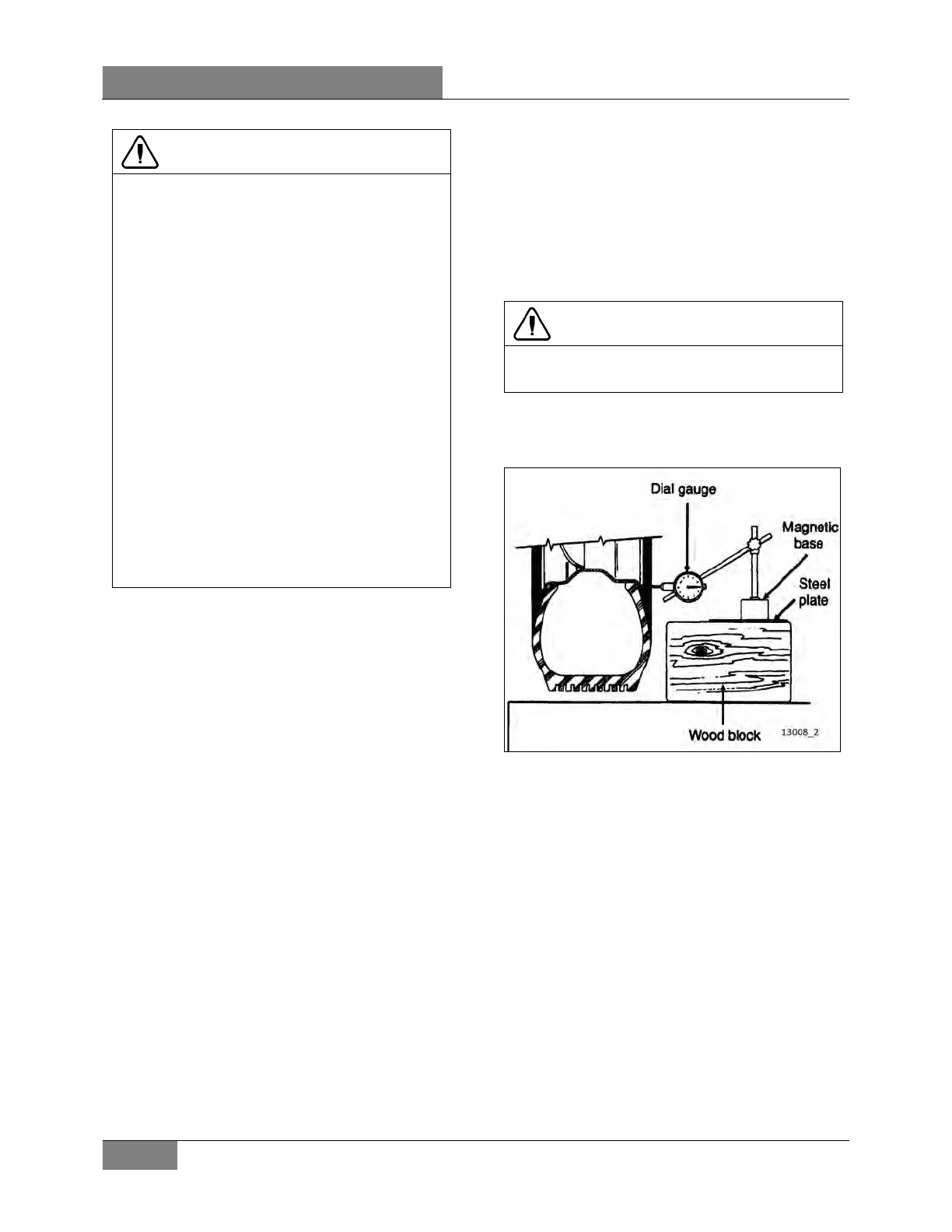SECTION 13: WHEELS, HUBS AND TIRES
DOB 1300-1556 | X3-45 Commuter PA-1648 Maintenance Manual | Section 13 revised Jan 2022
CAUTION
The actual length of thread engagement
present in an assembled wheel cannot always
be determined by visual inspection of
measurement of a tightened assembly. The
relationship of the wheel cap nut seat to the
end of the stud may vary. If there is any doubt
th
at enough thread engagement is present,
the number of engaged threads may be
counted. Tighten all nuts in the regular
manner, then loosen one to hand-tightness.
The number of turns to disengage a 1-1/8-inch
nut should be at least five full turns.
At least seven full turns should be required to
disengage a ¾-inch nut or a M22 nut. Ideally,
when torqued to the proper load, the stud
should be flush with the face of the nut. The
face of the nut may be recessed in nuts that
are taller for improved wrenching. With most of
the nuts in present use, a few unengaged
threads at the outer end will cause no problem
provided at least 5-7 full turns are required to
disengage the nut depending on thread size.
5. WHEEL STRAIGHTNESS TEST
1. Slightly raise axle to be checked and place a
safety support underneath;
2. Check wheel lateral run-out. Install a dial
gauge as shown in figure 4, then rotate the
wheel by hand one full turn. As the wheel
turns, note any variation on the dial gauge;
CAUTION
Damage to the dial gauge could occu
strikes a wheel balancing weight.
3. If the variation in lateral run-out exceeds
0.0625 inch (1,6 mm), the wheel must be
replaced.
FIGURE 3: DIAL GAUGE INSTALLATION
If doubt exists whether wheel or hub is distorted,
hub may be checked as follows:
• Replace the existing wheel with a wheel
known to be correct;
• Check wheel lateral run-out as outlined in
step 2;
• If, within specifications, the hub is correct
but the suspected wheel must be replaced.

